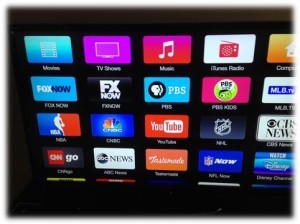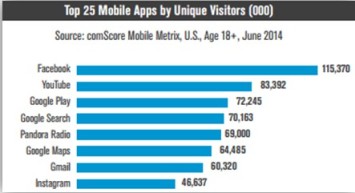By Steve Schwaid, VP of Digital Strategies
We’re not talking about spies, James Bond look-alikes or the NSA. Nope. It’s a little known tool on Facebook.
Facebook continues its exponential growth as an important tool for newsrooms to alert users of breaking news and weather — especially weather. Our research shows users increasingly depend on stations to provide weather information, especially severe weather, on their Facebook newsfeed.
Most newsrooms think there are two ways to push information to users.
1. Putting a story in the newsfeed with the hope Facebook will pass it through – understanding that based on the content, the way it’s written and the user’s previous reading habits on Facebook, that some content is passed along and others isn’t.
2. Sponsored posts. This is actually “buying a position” in the feed.
Obviously, the second way is a better way of getting the most out of Facebook, BUT you need to be careful of how you use sponsored feeds.
Something happened to me this week that demonstrated the main hazard of using sponsored posts. There’s no way to put a deadline on it, cutting off distribution. When you use a sponsored post to promote specific coverage or alert users of a public safety issue, it’s not a good thing when Facebook sends it on AFTER you’ve aired the content you wanted to promote or the breaking news/weather event is over.
Monday we had severe weather where I work. I got my tornado alerts vi a push notifications on my smart devices. But on Tuesday it was all clear, but then this (right) popped up in my newsfeed – as a sponsored post.
a push notifications on my smart devices. But on Tuesday it was all clear, but then this (right) popped up in my newsfeed – as a sponsored post.
I immediately clicked on the link. It was what it appeared to be – a now obsolete post that Facebook had just pushed on my feed.
You don’t want users getting posts to watch something that already happened or alert them to a breaking weather event and have it show up a day or two later – it looks bad and hurts your credibility.
How does this happen?
I spoke directly with Facebook and asked if when buying a sponsored post you can place stop pushing the sponsored posts?
The answer is no. Sponsored posts do NOT have specific end times.
In fact, a sponsored post can continue running past when you had hoped it would end if the post is getting a lot of traction, friends of yours are viewing it or it’s a topic you have been interested in before. In this case, Facebook doesn’t know the event is over, they do know it has gotten a lot of traction and figures I would like to see it. In this case, wrong.
So if you’re going to use a sponsored post, as a precaution, you should put in a sponsored post day or date of the weather event or the specific show you are promoting so the user can quickly determine the relevance.
The Dark Post Alternative
So what do you do if you want a post to end at a specific time? There is a Facebook tool called “Dark Posts.” Dark Posts allow you to start and stop/make a post go dark. Instead of buying a sponsored post for a sweeps story, a breaking news or weather alert you should seriously consider purchasing Dark Posts.
Here is a link on the value of a dark post and how to create them.
http://www.inc.com/comcast/dark-posts-the-best-approach-to-facebook-advertising-right-now.html
If we can help you with this, please give me a shout: sschwaid@cjni.com.
 consumer – constantly surrounded by information. If you look at it another way, it’s a keyhole. That’s the insight that research can unlock to give you a strategic advantage.
consumer – constantly surrounded by information. If you look at it another way, it’s a keyhole. That’s the insight that research can unlock to give you a strategic advantage.



 a push notifications on my smart devices. But on Tuesday it was all clear, but then this (right) popped up in my newsfeed – as a sponsored post.
a push notifications on my smart devices. But on Tuesday it was all clear, but then this (right) popped up in my newsfeed – as a sponsored post.





